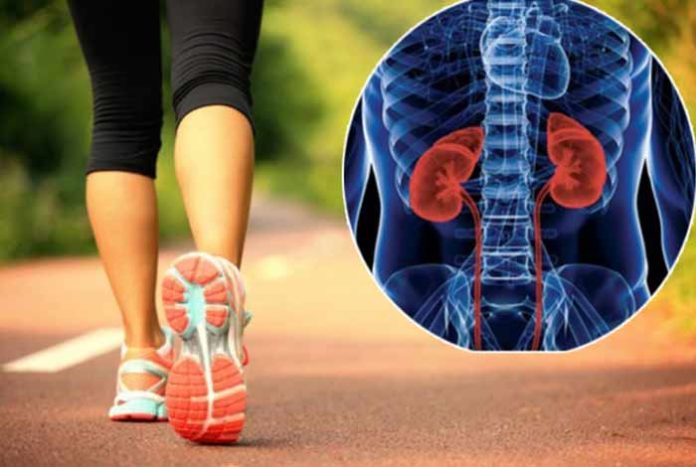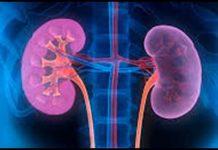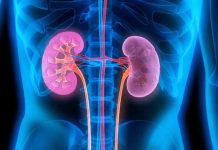
The word “toxin” is all over the web these days, but for a good reason. Build-up of toxins is what makes you ill. This is the reason, so many fad diet plans claiming to detoxify the body have emerged. But, do you know that you have an inbuilt organ that help you with this process? Yes, the two bean-shaped organs located against your back muscles, known as “Kidneys” serve as vital organ primarily involved in removing toxins and waste from your body. However, a common condition, mostly seen in people with diabetes and high blood pressure, known as Chronic Kidney Disease can severely hamper your toxin removal process.
Let’s first know, how do kidneys function? A particular unit of kidney, known as nephron acts as a natural filtering system of your body. It is a complex structure, consisting of a filter, called glomerulus and tubules. The toxic-loaded blood passes through the glomerulus, which filters the toxins out of the blood. This filtered blood then runs through a network of tubes, wherein all necessary minerals and electrolytes are absorbed in the body and unnecessary waste products are eventually eliminated in the form of urine. By doing so, kidneys keep a check on the mineral and electrolyte balance of your blood.
Besides acting as an efficient filter, kidneys have a myriad of other functions. It releases a hormone, known as erythropoietin, which is essential for the formation of your blood. You may be surprised to know that the vitamin D you receive from sunlight is inactive. Your kidneys convert it into an active form, which keeps your bones strong and healthy. So, one pair of kidney works hard to keep you healthy and fit. But, the key factor that keeps your kidneys in a healthy state is its optimal blood flow.
Now, what happens when you have a persistently high blood pressure or an uncontrolled blood sugar levels? Hypertension (high blood pressure) and other cardiovascular diseases narrow down the blood vessels supplying your kidneys, thus reducing their efficiency. An uncontrolled diabetes puts undue strain on your kidneys, making them work harder to function normally. If this happens for several years, the kidney function declines considerably, marking the onset of a medical condition, known as Chronic Kidney Disease (CKD).
Besides diabetes and hypertension, regular consumption of some pain-killers to some common diseases such as glomerulonephritis, kidney stones, recurrent Urinary Tract Infections, Systemic Lupus Erythematosus, polycystic kidney disease, an enlarged prostate, etc. can also cause CKD. Other factors, from being of certain ethnicity to obesity, smoking, alcoholism and aging also increases your risk of developing CKD. Research has also shown that CKD affects more women than men[1]. This validates the theme of World Kidney Day 2018.
Now, you may wonder, how to know if you or your closed one has it? Well, the bad news is that you won’t see any symptoms until this disease has progressed to its advanced stage. CKD usually produces some distressing symptoms, only when 25% of kidney has already been damaged. This is the reason why health care professionals have named it a “Silent Disease”. If you lie in the high-risk group of CKD, you may want to look out for some symptoms, such as fatigue, anemia, insomnia, muscle cramps, poor appetite, headache, sudden weight changes and dry itchy skin. It may also impair your interpersonal relationships by causing conditions, like erectile dysfunction and infertility in women and men. Lack of active vitamin D may cause weak and painful bones. Also, if disease like hypertension has already encroached you, CKD may worsen your high blood pressure.
Now, what’s the cure? The good news is that CKD can be well-managed through medications and by following a kidney-friendly diet plan, which is low in sodium, phosphorus, potassium and protein as these components of your food can stress your improperly functioning kidneys.
But, what happens if this “silent disease” goes unnoticed even in its advanced stage? What if you don’t seek medical help even on developing symptoms? Well, let me introduce you to the most advanced version of this disease, known as End Stage Renal Disease (ESRD), commonly known as Kidney Failure. It basically means that your kidney function has completely declined, i.e., you no longer have a functioning kidney. In these cases, you would either need to undergo frequent dialysis or you would need a kidney transplant.
Now let’s be honest here, even moderately economically sound people cannot afford these treatments. So, now what? Well, our eminent researchers have come up with the cheapest ever treatment plan for CKD patients.
This startling plan involves “walking”. A recent study published in the Clinical Journal of the American Society of Nephrology, was led by a team of researchers from the China Medical University Hospital in Taiwan. This study included 1.3 years of analysis of 6,363 patients of advanced stage of CKD (Stage 3 to 5), with an average age of 70 years. 21 per cent of these patients were actively involved in walking on a regular basis. The research found that these individuals had a 21% lower likelihood of requiring dialysis or a kidney transplant. Another outstanding finding of the study was that the risk of dying in these subjects reduced to a startling 33%. Concluding the study, the co-leader of the study, Dr, Che-Yi Chou said that walking for merely 30 minutes in a week can improve the survival rate and reduce the need for dialysis in CKD patients with co-morbidities. Adding to his statement, he emphasized on another dramatic finding of the study which showed that increase in frequency and duration of walking can further improve the condition in CKD patients.[2]
Let me give you few more evidence-based reasons to incorporate walking in your daily exercise regime. A research was published in Circulation, a journal of American Heart Association, led by Luisa Soares-Miranda, a PhD of the Harvard School of Public Health, Boston. The study showed an 11% reduction in risk of getting a heart attack in people aged 65 years and above.
Another research by American Cancer Society, shows that walking can significantly reduce the risk of developing breast cancer and colon cancers. Thus, American Cancer Society[3] recommends that every adult must get at least 150 minutes of moderately intense physical activity (such as brisk walk) or 75 minutes of vigorously intense activity (one that makes you sweat, breath faster and increases your heart rate) on a daily basis.
Now you would agree when I say that walking is the cheapest, doable and most effective mantra to lead a healthy and happy life. Do not wait to reap its benefit. Include walking in your daily life and you may never need any medication.






